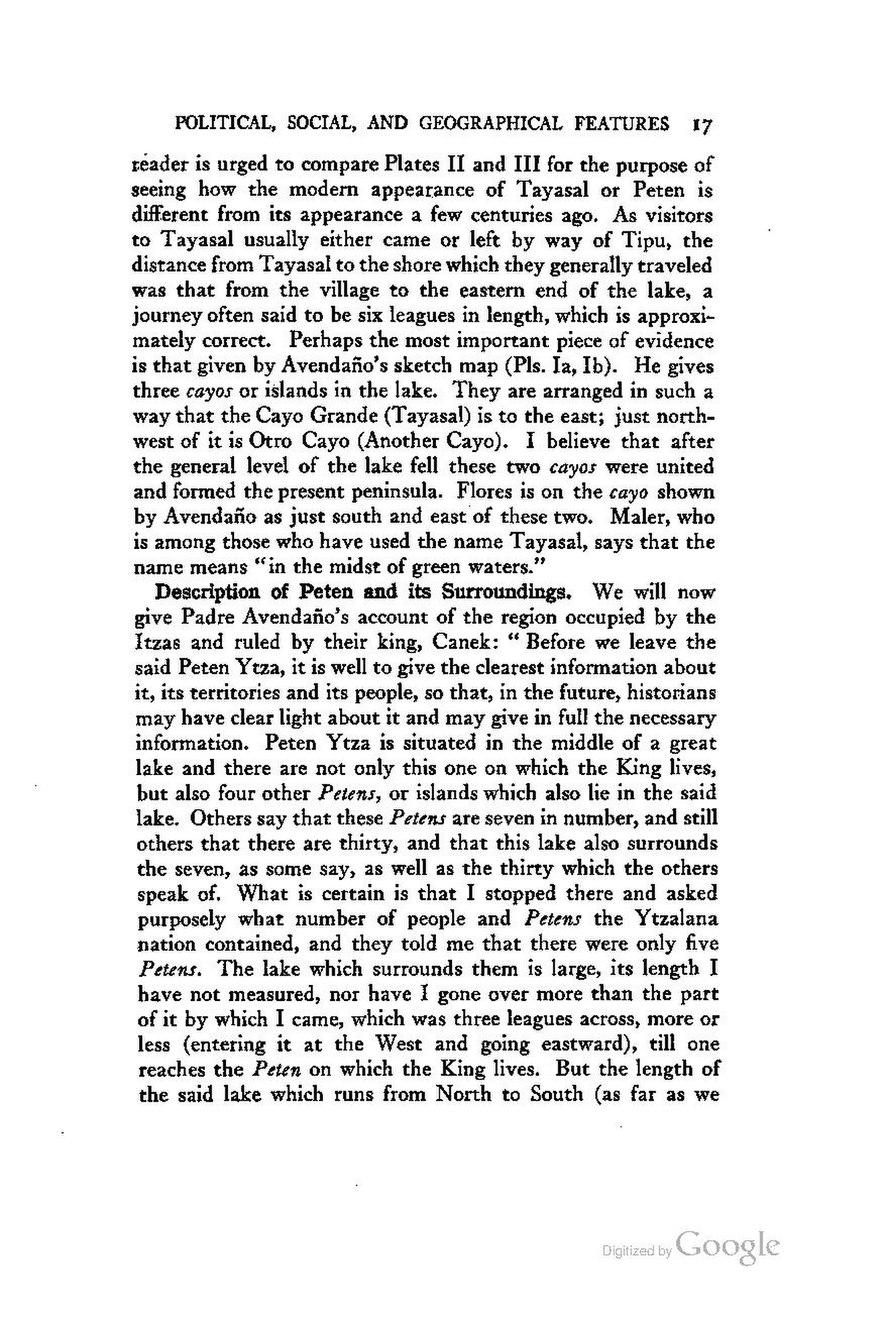reader is urged to compare Plates II and III for the purpose of seeing how the modern appearance of Tayasal or Peten is different from its appearance a few centuries ago. As visitors to Tayasal usually either came or left by way of Tipu, the distance from Tayasal to the shore which they generally traveled was that from the village to the eastern end of the lake, a journey often said to be six leagues in length, which is approximately correct. Perhaps the most important piece of evidence is that given by Avendaño's sketch map (Pls. Ia, Ib). He gives three cayos or islands in the lake. They are arranged in such a way that the Cayo Grande (Tayasal) is to the east; just northwest of it is Otro Cayo (Another Cayo). I believe that after the general level of the lake fell these two cayos were united and formed the present peninsula. Flores is on the cayo shown by Avendaño as just south and east of these two. Maler, who is among those who have used the name Tayasal, says that the name means "in the midst of green waters."
Description of Peten and its Surroundings. We will now give Padre Avendaño's account of the region occupied by the Itzas and ruled by their king, Canek: "Before we leave the said Peten Ytza, it is well to give the clearest information about it, its territories and its people, so that, in the future, historians may have clear light about it and may give in full the necessary information. Peten Ytza is situated in the middle of a great lake and there are not only this one on which the King lives, but also four other Petens, or islands which also lie in the said lake. Others say that these Petens are seven in number, and still others that there are thirty, and that this lake also surrounds the seven, as some say, as well as the thirty which the others speak of. What is certain is that I stopped there and asked purposely what number of people and Petens the Ytzalana nation contained, and they told me that there were only five Petens. The lake which surrounds them is large, its length I have not measured, nor have I gone over more than the part of it by which I came, which was three leagues across, more or less (entering it at the West and going eastward), till one reaches the Peten on which the King lives. But the length of the said lake which runs from North to South (as far as we
